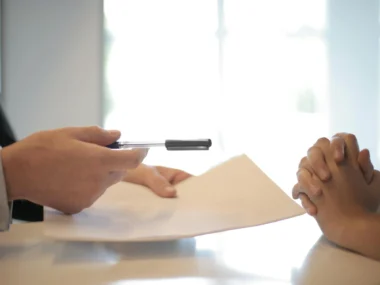
Auto insurance can be confusing, especially with all the jargon. To make sure you’re adequately covered, it’s important to understand the key types of coverage: liability, collision, and comprehensive. This guide breaks down these terms and explains when you might need each one.
1. Liability Coverage
- What It Covers:
- Bodily Injury Liability: Covers medical expenses, lost wages, and legal costs for injuries you cause to others in an accident.
- Property Damage Liability: Covers repair or replacement costs for property you damage in an accident (e.g., another car, fences, or mailboxes).
- Who Needs It: Required in nearly every state. State laws dictate minimum liability limits, but increasing these limits can provide added protection.
- Example Scenario: You rear-end another driver, causing $5,000 in damages to their car and $2,000 in medical expenses. Your liability coverage pays these costs.
Pro Tip: Choose limits higher than your state’s minimum to avoid paying out of pocket in serious accidents.
2. Collision Coverage
- What It Covers:
- Repairs or replacement of your vehicle after an accident, regardless of who is at fault.
- Covers damage from collisions with other vehicles or objects (e.g., hitting a pole or guardrail).
- Who Needs It:
- Required if you lease or finance your car.
- Optional for older vehicles, especially if the repair costs might exceed the car’s value.
- Example Scenario: You skid on icy roads and crash into a tree. Collision coverage pays for the repairs to your car.
Pro Tip: Consider dropping collision coverage if your car’s value is low and repair costs would outweigh the benefit.
3. Comprehensive Coverage
- What It Covers:
- Non-collision-related damages to your vehicle, such as:
- Theft
- Vandalism
- Natural disasters (e.g., floods, hurricanes)
- Fire
- Falling objects (e.g., tree branches)
- Animal collisions (e.g., hitting a deer)
- Non-collision-related damages to your vehicle, such as:
- Who Needs It:
- Required for leased or financed cars.
- Optional for older cars but recommended in areas prone to natural disasters or high theft rates.
- Example Scenario: Your car is damaged by hail during a storm. Comprehensive coverage pays for the repairs.
Pro Tip: Pair comprehensive and collision coverage for full protection against most scenarios.
Additional Types of Coverage
- Uninsured/Underinsured Motorist Coverage:
- Protects you if the at-fault driver has no insurance or insufficient coverage.
- Personal Injury Protection (PIP):
- Covers medical expenses, lost wages, and other costs for you and your passengers, regardless of fault (required in some states).
- Roadside Assistance:
- Provides help for flat tires, towing, and other emergencies.
How to Choose the Right Coverage
- Assess Your Needs: Consider your car’s value, your driving habits, and your financial situation.
- Understand State Requirements: Ensure you meet the minimum liability coverage for your state.
- Balance Cost and Protection: Higher coverage limits and additional types of coverage mean higher premiums but better financial protection.
Key Takeaways
- Liability coverage: Essential and legally required; protects against costs for others in an accident.
- Collision coverage: Repairs your car after an accident, regardless of fault.
- Comprehensive coverage: Covers non-collision damage like theft, fire, and weather events.
- Regularly review your policy to ensure you’re adequately covered without paying for unnecessary extras.
Understanding your auto insurance options helps you make smarter decisions and ensures you’re prepared for life’s unexpected events.


